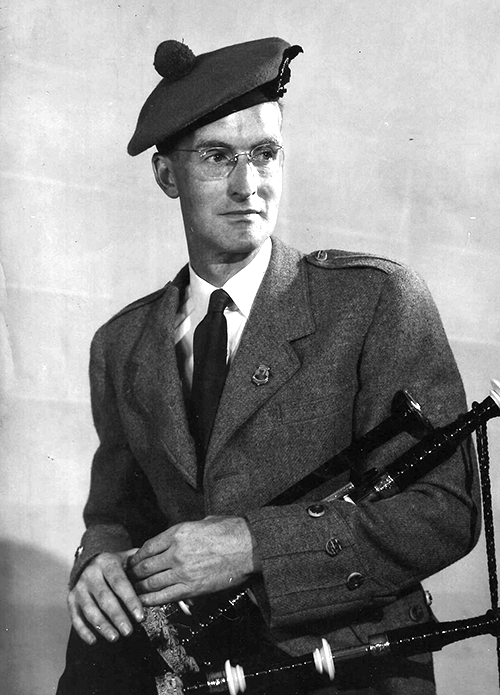
The College of Piping was founded early in the 1940s as part of a youth organisation named ‘Fianna na h’Alba’, writes Jeannie Campbell. The Fianna activities included the study of Scottish history, the Gaelic language and literature, Scottish crafts, Highland dancing and all outdoor pursuits.
Another important feature of their activities were ceilidhs and piper member Seumas MacNeill (pictured above) would of course play at these. The result was that other members asked for piping instruction so a piping class was started. Iain Thomson became the first College of Piping pupil. This was in 1942.
Dugald MacNeill was brought up in mid-Argyll and had yearned to be a piper but it wasn’t until the family moved into Glasgow when he was aged twelve that he had the opportunity. He heard about the piping class which was held in Pitt Street and in October or November 1943, he went along and Dugald remembers travelling by tram on dark winter nights during the blackout to the Pitt Street premises. Sometimes the trams were not running and he would walk.
At this time it cost 3d [less than three pence today] per night to attend the class but it you didn’t have the money you could still attend. On winter evenings the first task was to light a fire in the two main rooms of this dark, dismal basement and then heat some water to wash and heat the fingers.
After two hours of class and individual instruction, there was an interval for a cup of Oxo. Then everyone came together in one room. There would be a short talk on some aspect of piping or piping history and the most popular speaker at this time was Hector Mackenzie, a soft-spoken schoolteacher and non-piper who could always supply a very good tale.
After the story, the talk would be illustrated by one of the senior instructors playing. For Dugald, this was the highlight of the evening and if they played tunes he thought he could play that really made him want to go home and practise.
By this time the fires were really going quite well and the place was just beginning to warm up and it was time to go home. Archie MacNeill [the blind piper and Seumas’s teacher] would come in from time to time just to check on what was happening and to give encouragement to everyone.
The College grew from these early beginnings and after a time the piping had become the main activity in Pitt Street. The premises there were soon outgrown and the College moved to Otago Street in 1950.
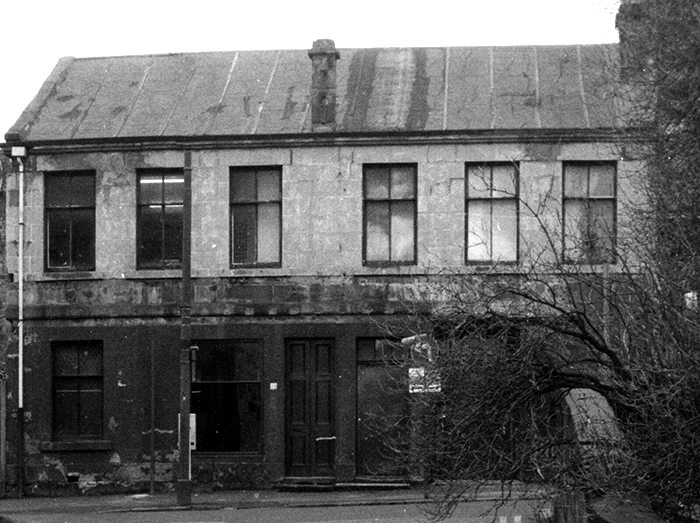
The nights in Pitt Street must have formed a welcome escape from the war which was raging in the world outside.
In November 1940 it was reported in the Glasgow Herald that, ‘Six Glasgow battalions of famous Scottish regiments, which lost their band equipment at or near Dunkirk, are once again marching to the strains of the bagpipes or the music or other instruments.
‘They have been supplied with the regulation outfits by the City of Glasgow Central War Relief Fund. Many appeals have been made to Lord Provost PJ Dolan by Scottish units for bagpipes.
‘By December he hopes that all requests will have been granted. One commanding officer whose battalion received a set of drums has written to the effect that the gift will enable the band to give a public performance today. ‘I can assure you,’ he adds, ‘that all ranks thoroughly appreciate what Glasgow has done to help us.”’
[wds id=”9″]
Another report, from the Piping and Dancing magazine of February 1941, indicates that pipers were to be found in some of the most unexpected places:
‘Major Churchill, a nephew of the Premier [a popular myth], who is at present located with his men in one of our west coast towns, is an accomplished piper, but not the kind to be satisfied with a quiet tune in the house.
‘Oh no! The major is unorthodox, and puts his heart into the job thoroughly. To the delight of the lads, when tiring a bit on a long march, he will shoulder the pipes and cheer them on their way with a rousing tune.’
- To be continued.
The ‘Historic UK’ website has more on the exploits of ‘Fighting Jack Churchill’: ‘Churchill was a natural for the Commandos, and in 1941 he was second in command of the unit that raided the Nazi garrisons, stores and fish oil factories at Vågsøy in Norway.
‘Sir John Hammerton, in his 9-volume “History of the Second World War” noted that Churchill encouraged his men by playing his bagpipes. In fact, Churchill leaped into action playing the March of the Cameron Men on the pipes and then hurled the first grenade before charging onwards. He was wearing a basket-hilted sword of the claybeg type.
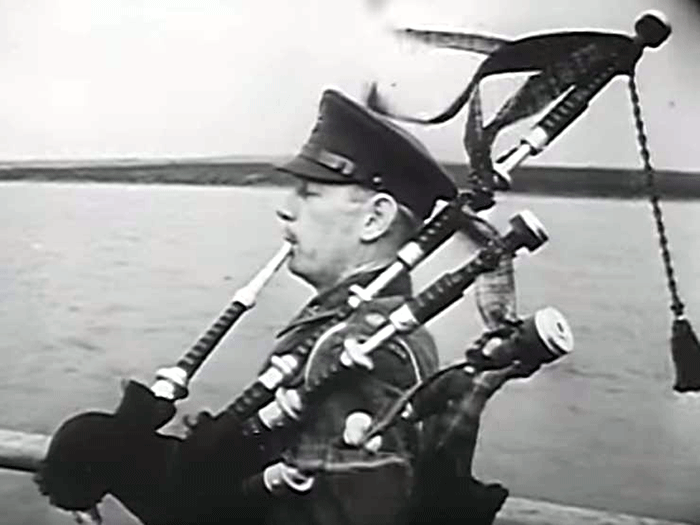
‘Some remarkable film footage shows both the raid and Jack Churchill playing his bagpipes on deck afterwards, while the rest of the unit dances a Highland fling. Churchill was awarded the Military Cross for his bravery in battle during this raid and the Battle of l’Epinette.
‘The remainder of Churchill’s war experience was just as astonishing. He led troops through Sicily and during the Salerno landings, encouraging them as always with the sound of the bagpipes. Using just his claybeg, he was responsible for the capture of 42 German troops and a mortar crew. Although recommended for the Victoria Cross, he was actually awarded the DSO. Twice.
‘Later he fought in Yugoslavia, where he was captured and sent to Sachsenhausen concentration camp. He is said to have been playing ‘Will ye no come back again’ on the bagpipes when a grenade exploded nearby, knocking him out.’
-
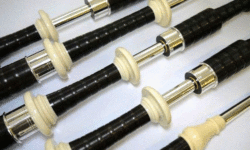 Bagpipes – DN4A – High Quality Set in Plain Silver£200.00 – £2,052.00
Bagpipes – DN4A – High Quality Set in Plain Silver£200.00 – £2,052.00 -
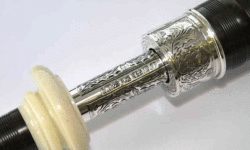 Bagpipes – DN5 – The Finest Bagpipe Available£300.00 – £3,424.00
Bagpipes – DN5 – The Finest Bagpipe Available£300.00 – £3,424.00 -
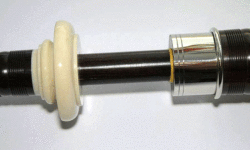 Bagpipes – DN1, High Quality Instrument£100.00 – £1,250.00
Bagpipes – DN1, High Quality Instrument£100.00 – £1,250.00




















Reading this article moves me to tears, and I am certainly not the crying type. I got to know Seumas’ loving and kind nature, and his true love of Scotland. What a fine and unique gentleman! And his College’s early days! To me, THAT is true utmost luxury: nobility in everything. How could anyone not be proud of belonging to such group? Thank you so much for this beautiful article!